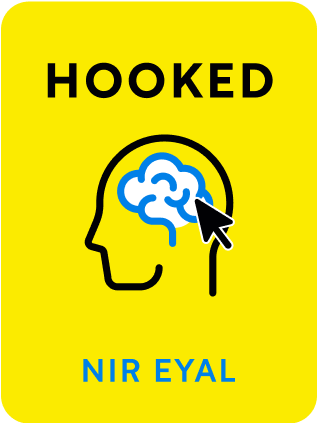

This article is an excerpt from the Shortform summary of "Hooked" by Nir Eyal and Ryan Hoover. Shortform has the world's best summaries of books you should be reading.
Like this article? Sign up for a free trial here .
How can you increase motivation? Are there other things standing in the way of getting things done?
Cognitive biases are shortcuts for our brains. It is possible to increase motivation by taking advantage of these biases.
Read on for 4 strategies to increase motivation and discuss simplifying actions to make things easier.
Shortcuts to Increase Motivation
Cognitive biases affect all of us, causing things to see things as quite not objective. You can use cognitive biases and heuristics in your favor to increase motivation:
- Scarcity effect – the less of something there is, the more valuable it seems.
- In an experiment, people were shown two jars with different numbers of cookies – one jar had 8, and the other had 2. They were identical cookies. People valued the cookies in the jar with 2 more highly.
- Amazon shows “only 9 left in stock.”
- Flights show “only 5 seats left at this price.”
- Framing effect – the context around something changes its perception.
- Price affects your experience of wine.
- Violin master Joshua Bell played in a DC subway station. He was summarily ignored, because the context of the subway station made the idea of a virtuoso playing there improbable.
- Anchoring – people over-weigh the first piece of info they receive.
- A starting price in negotiation often forms the centroid of movements. A higher number offered first will stretch the final negotiation price higher.
- When asked to estimate a number product, those who see 1x2x3x4x5 estimate lower numbers than those who see 5x4x3x2x1
- Endowed progress – you complete more progress when you feel you have already made some progress.
- For punch cards, customers were given a card with 10 slots and 2 already punched in showed an 82% higher completion rate than customers given a blank card with 8 slots.
- LinkedIn shows a progress meter in completing the profile – even when just joining, the bar is somewhat filled in.
How to Simplify Your Action
It may not be enough to increase motivation with heuristics and biases. You may need to simplify the action, which has the effect of an increase in motivation because it is now easier to do. Behavioral scientist B. J. Fogg describes six factors that influence a task’s difficulty:
- Time
- Money
- Physical effort
- Mental effort
- Social deviance
- Non-routine – “how much the action matches or disrupts existing routines.”
(Shortform note: some of the largest web companies have reduced one or more of these factors by multiples, or even orders of magnitude:
- Compared to calling 50 separate friends or sending mass emails, Facebook reduces time and effort to broadcast your personal news. It also became socially acceptable to broadcast good personal news on Facebook, when at one point it might have been considered socially gauche.
- Compared to hailing a cab or driving, Uber reduces the time, money, physical effort, and mental effort considerably.
- Compared to shopping in physical stores, Amazon reduces the first 4 considerably, and also matches existing routines of shopping.
Furthermore, each of these roughly matched routines that people had previously done – Uber fit people’s prior habits behavior of getting into strangers’ cars, and Amazon fit user’s behaviors of shopping in physical stores.)
Identify which factor is most impeding your users. Is the mental effort needed to use your product too high? Is the user in a social context where the behavior is inappropriate? Is the behavior so different from normal routine that it’s offputting?
You don’t have to increase motivation to get more action. Instead, you just create fewer places where people give up. Here are examples of tactics to reduce frictions:
- Log in with Facebook, rather than type in email and password
- Share a page with an embedded Tweet button, rather than go to Twitter.com and copy text over
- Google’s homepage is simple and clear. The search has auto-suggest, spelling correction, and instant search results, reducing mental effort and time to get results.
- The iPhone has the camera button on the homescreen, reducing the friction to taking photos.
- Pinterest has infinite scroll, reducing the physical effort needed to view more content.
- Change your landing page or homepage to direct users to the action you want them to take.
- Twitter changed from a search form to creating an account or downloading the app.
Should you work to increase motivation or ability? The author argues, “always start with increasing ability.” Motivating users is hard – users don’t read text, and they have deeply ingrained behaviors. Reducing the effort to perform an action gets them to the reward more quickly.

———End of Preview———
Like what you just read? Read the rest of the world's best summary of Nir Eyal and Ryan Hoover's "Hooked" at Shortform .
Here's what you'll find in our full Hooked summary :
- The 4 key steps that addictive tech products use to ensnare you
- Why user rewards need to be random and variable to have the strongest effect
- How to build irresistible apps yoruself






